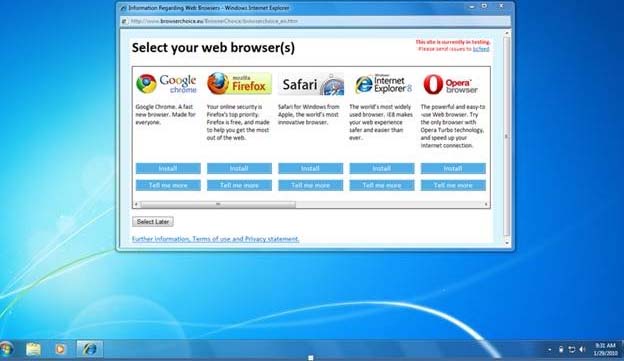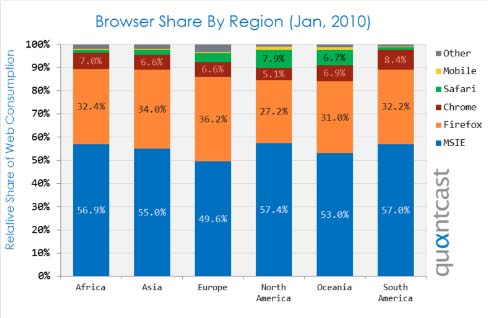Mozilla Firefox and Google Chrome have taken up a good deal of the web browser headlines in recent memory. Google showcased its much-publicized speed tests for Chrome (even parodied by Opera), then launched a stable version for Windows, Mac, and Linux. Mozilla recently shared an early product plan for Firefox 4, with (like Chrome) an emphasis on speed (then CEO John Lilly announced he was stepping down).
It is Microsoft’s Internet Explorer, which still rules the roost, however, in terms of browser market share on the desktop in the U.S. IE8 and IE7 have significant leads over all the competition, but IE6, while still having an edge over the rising Chrome, dropped to below 5% for the first time, according to StatCounter.
The analytics firm says usage of IE6 in the US and Europe has fell to that point – 4.7% (a year ago, it was at 11.5%).
|
Source: StatCounter Global Stats – Browser Version Market Share
|
|
Source: StatCounter Global Stats – Browser Version Market Share
|
"At these levels web developers now have valid justification not to support IE6 in the future," says StatCounter CEO Aodhan Cullen, with the firm adding that a number of sites including YouTube are already understood to have withdrawn support for IE6.
"IE6 has been a bit of a pain for many web developers and designers who have often had to recode their site to get it to work. There are also security implications in its continued usage," addsCullen.
In other parts of the world, IE6 is still a more significant part of the picture. Cullen says that if your target market is Asia, you’re "not out of the woods." According to the firm, it still has 20.8% usage there. In that part of the world, IE8 has only just overtaken it. It’s also still pretty big in Africa.








